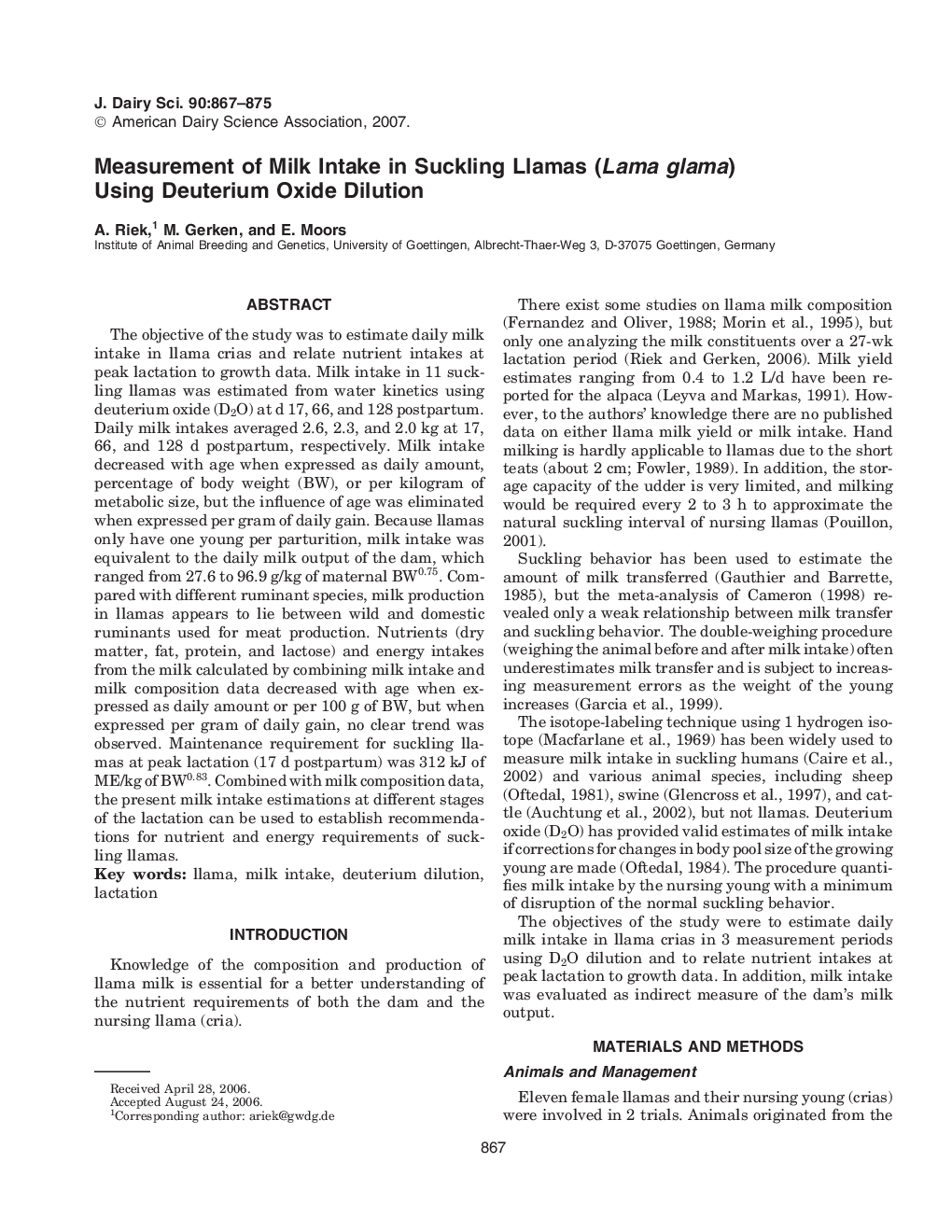| Article ID | Journal | Published Year | Pages | File Type |
|---|---|---|---|---|
| 2440352 | Journal of Dairy Science | 2007 | 9 Pages |
Abstract
The objective of the study was to estimate daily milk intake in llama crias and relate nutrient intakes at peak lactation to growth data. Milk intake in 11 suckling llamas was estimated from water kinetics using deuterium oxide (D2O) at d 17, 66, and 128 postpartum. Daily milk intakes averaged 2.6, 2.3, and 2.0Â kg at 17, 66, and 128 d postpartum, respectively. Milk intake decreased with age when expressed as daily amount, percentage of body weight (BW), or per kilogram of metabolic size, but the influence of age was eliminated when expressed per gram of daily gain. Because llamas only have one young per parturition, milk intake was equivalent to the daily milk output of the dam, which ranged from 27.6 to 96.9 g/kg of maternal BW0.75. Compared with different ruminant species, milk production in llamas appears to lie between wild and domestic ruminants used for meat production. Nutrients (dry matter, fat, protein, and lactose) and energy intakes from the milk calculated by combining milk intake and milk composition data decreased with age when expressed as daily amount or per 100Â g of BW, but when expressed per gram of daily gain, no clear trend was observed. Maintenance requirement for suckling llamas at peak lactation (17 d postpartum) was 312Â kJ of ME/kg of BW0.83. Combined with milk composition data, the present milk intake estimations at different stages of the lactation can be used to establish recommendations for nutrient and energy requirements of suckling llamas.
Related Topics
Life Sciences
Agricultural and Biological Sciences
Animal Science and Zoology
Authors
A. Riek, M. Gerken, E. Moors,
